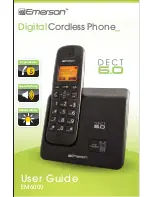
GB
- 23 -
scale (9) as you do so.
•
Refasten the locking lever for miter setting (7).
Check the handle is securely fastened.
5.3 Extraction of dust and chips (Figure 6)
•
Connect a suitable vacuum cleaner to the
provided chip extractor connector (14) of your
circular saw (vacuum cleaner not included).
This will provide excellent dust extraction on
the workpiece. The benefits are that you will
protect both the equipment and your own
health. Your work area will also be cleaner
and safer.
•
Dust created when working may be dange-
rous. Refer to the section entitled “Safety inst-
ructions”.
•
Important! The vacuum cleaner you use for
the extraction work must be suitable for the
workpiece material.
•
Check that all the parts are properly connec-
ted.
5.4 Parallel stop (Figure 7/8)
•
The parallel stop (16) enables you to saw par-
allel lines.
•
Loosen the locking screw for the parallel stop
(8) on the saw foot (6).
•
To assemble, slide the parallel stop (16) into
the guide (c) on the saw foot (6) (see Figure
7)
•
Set the required spacing and then tighten the
locking screw (8) again.
•
Using the parallel stop: Position the parallel
stop (16) flat on the edge of the workpiece
and start the cut.
Important! Carry out a trial cut in a piece
of waste wood
5.5 Line guide (Fig. 9)
Using the line guide (15) you can carry out exact
cuts following cutting lines marked on the work-
piece.
Use the mark (d) for the 0° or 90°angle setting
and the mark (b) for the 45° angle setting.
For information on the angle setting see 5.2
Important! Carry out a trial cut in a piece
of waste wood
5.6 Charging the LI battery pack (Fig. 10-11)
1. Remove the battery pack (g) from the handle,
pressing the pushlock buttons (f) downwards
to do so.
2. Check that your mains voltage is the same as
that marked on the rating plate of the battery
charger. Insert the power plug of the charger
(j) into the mains socket outlet. The green
LED will then begin to
fl
ash.
3. Push the battery pack onto the battery char-
ger.
In section 10 “Charger indicator” you will
fi
nd a
table with an explanation of the LED indicator on
the charger.
If the battery pack fails to become charged, ple-
ase check
•
whether there is voltage at the socket-outlet
•
whether there is proper contact at the char-
ging contacts on the charger.
If the battery still fails to become charged, please
return
•
the charger
•
the battery pack
to our Customer Service Department.
5.7 Battery capacity indicator
(Fig. 10 – Item h)
Press the battery capacity indicator switch (i). The
battery capacity indicator (h) shows the charge
status of the battery using 3 LEDs.
All 3 LEDs are lit:
The battery is fully charged.
2 or 1 LED(s) are lit:
The battery has an adequate remaining charge.
1 LED blinks:
The battery is empty, recharge the battery.
All LEDs blink:
The battery pack has undergone exhaustive di-
scharge and is defective. Do not use or charge a
defective battery pack.
Anl_TE_CS_18_Li_solo_SPK9.indb 23
Anl_TE_CS_18_Li_solo_SPK9.indb 23
21.05.2019 14:51:49
21.05.2019 14:51:49
















































